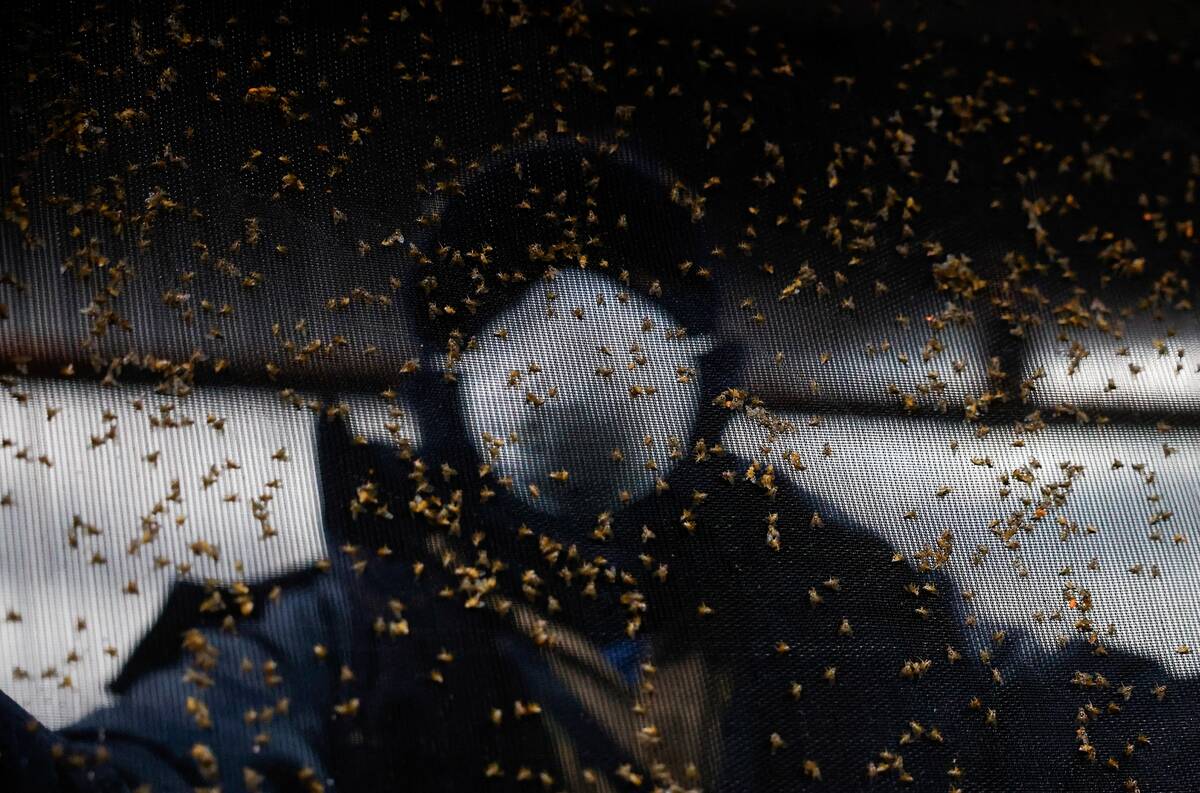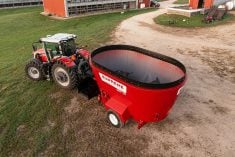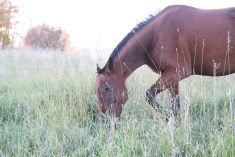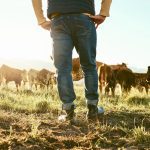As cold temperatures arrive, good-quality feed and protection from wind are key
The coldest part of the winter is here, and that may have a significant impact on livestock in areas that experienced relatively mild fall conditions.
North Dakota State University Extension livestock specialists Karl Hoppe and Janna Block note that although most cattle in the region are acclimated to a cold environment, long periods of severe cold may require additional management to ensure health and productivity.
“The ability of cattle to withstand cold conditions is impacted by the lower critical temperature, or LCT,” says Hoppe. “When the temperature drops below the LCT, maintenance requirements will increase and performance can be affected.”
Read Also

Canada too cold for New World screwworm
New World screwworm is closing in on the U.S. from Mexico, but the deadly livestock parasite isn’t likely to dig a surviving population in Canada, even if the fly species sneaks over the border.
The LCT will vary depending on thickness of the hide and hair coat, whether the animal is wet or dry, and factors such as age, stage of production and body condition of the animal.
“In general, an LCT of 18 F (-8 C) commonly is used for animals with a dry, heavy coat,” says Hoppe. “However, well-adapted cattle in good body condition during mid-gestation may be able to tolerate temperatures as low as -6 F (-21 C) without negative impacts on performance.”
Below the LCT, the maintenance energy requirement of cattle will increase as cows divert more energy to maintaining body temperature. To compensate, additional energy must be provided in the diet.
“If additional feed and protection from elements are not provided, cows will burn body energy stores to produce heat and maintain the function of vital organs,” notes Block.
“If extreme weather conditions are short-lived, effects on body condition losses may be minimal. However, extended cold conditions without additional energy provided will result in weight loss that will further reduce body condition and insulation and impact the cow’s ability to deal with cold stress.”
Like people, cattle experience the effective temperature, which includes air temperature, humidity and wind chill. Wind can increase heat losses much more quickly than when air is still at the same temperature. Several charts are available to help producers calculate the effective temperature. For one example, please refer to the chart available on NDSU Extension website.
To account for increased energy needs due to cold temperatures, a general rule of thumb is to increase the energy density (total digestible nutrients or TDN) of the diet by one per cent for each degree below the LCT.
For example, a temperature of -15 C with a 30 km-h wind results in an effective temperature of -26 C, five degrees below the LCT mentioned above for cows in good condition with a heavy winter hair coat during mid-gestation.
Under normal conditions, cows require an energy density of at least 50 per cent TDN during mid-gestation. In this example, cows would require an additional nine per cent TDN for a total of 59 per cent TDN.
“During extended cold temperatures, meeting additional energy needs with increased amounts of low-quality forage can be difficult, and may even be dangerous,” Block says. “As metabolic rates increase in order to increase heat production and maintain body temperature, appetite and voluntary feed intake are increased.
“When large amounts of low-quality forage are consumed, inadequate protein and energy limit fermentation by rumen microbes. This will reduce nutrient absorption and slow the reduction of particle size in the rumen. Over time, large feed particles accumulate in the abomasum, fluids stop moving through the digestive tract, and blockage occurs. This condition is known as abomasal impaction.”
Signs of impaction include a distended abdomen, weakness and anorexia, as well as reduced manure excretion. Affected animals typically die within a week. Higher-quality forages and/or supplements such as grain or byproducts may be necessary to avoid this situation during extreme cold weather events.
Feeding late in the afternoon will help ensure that heat from fermentation will be maximized during the coldest part of the night. It is also important to ensure that cattle have consistent access to fresh water to help increase nutrient utilization and reduce the risk of impaction.
“In addition to adjusting diets, providing windbreaks and bedding can increase the ability of livestock to effectively manage cold stress,” says Hoppe.
“While heavy winter haircoats offer excellent protection against cold weather, wet and/or windy conditions can reduce the insulating properties.”
In particular, livestock on rangeland or winter pasture may not have adequate protection from the elements. Low spots and trees that offer natural protection from wind and snow are not available in every situation, so producers may need to provide portable solutions such as large round bales or panels covered with a tarp or canvas.
In the case of severe cold stress, cattle may experience hypothermia, which slows metabolic and physiological processes and diverts blood away from extremities. This can result in frostbite to teats, ears and testes.
Therefore, producers must consider potential negative impacts not only on cows but also on herd bulls. Bedding can provide additional insulation between cattle and snow or frozen ground, and reduce the risk of frostbite.
“Beef cattle are very resilient, and are capable of adapting and performing in cold temperatures when provided with adequate rations and protected from the elements,” says Block.
Check out the NDSU Extension publication “Winter Management of the Beef Cow Herd” for additional information.















